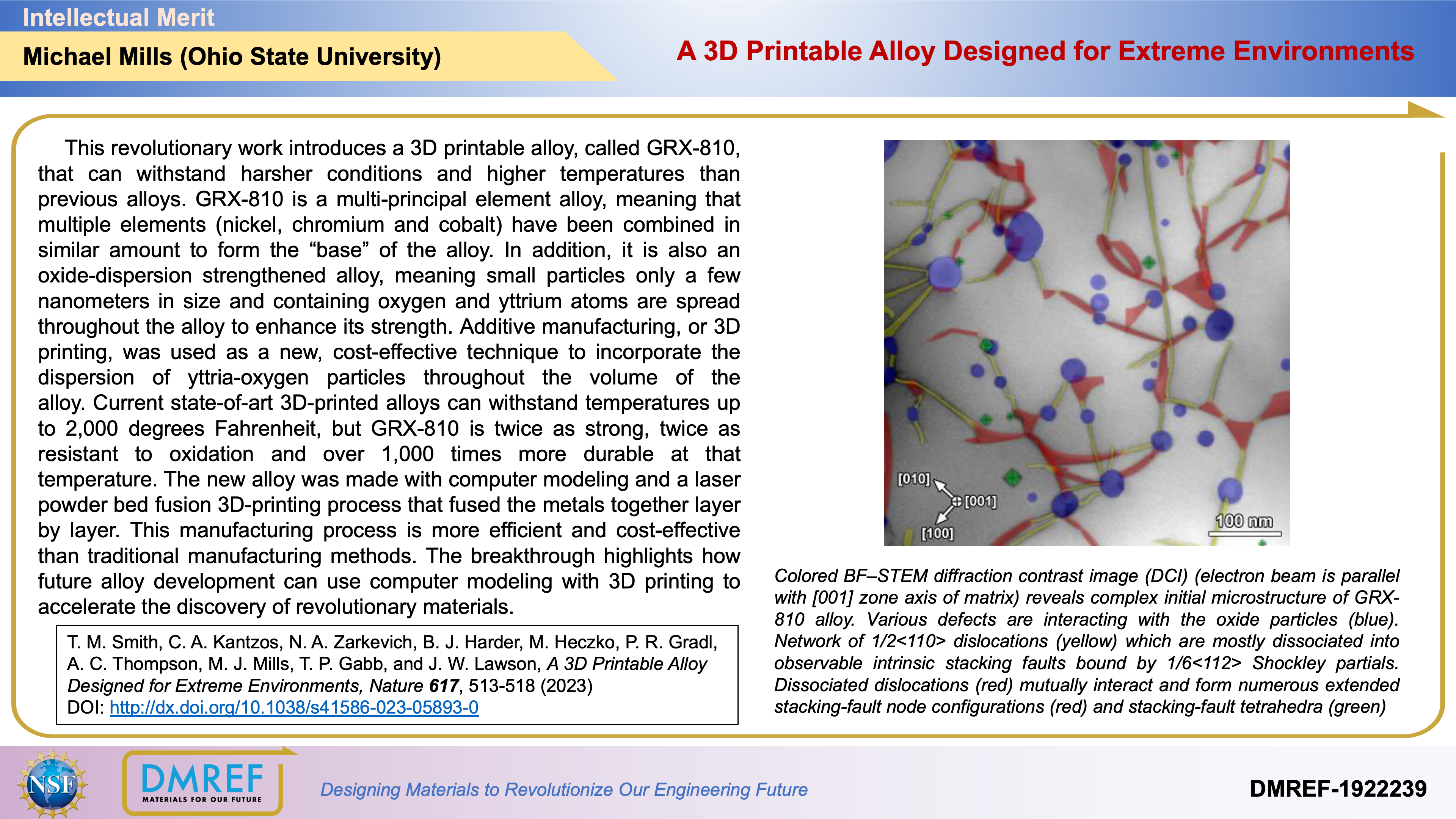A 3D Printable Alloy Designed for Extreme Environments
![Colored BF–STEM diffraction contrast image (DCI) (electron beam is parallel with [001] zone axis of matrix) reveals complex initial microstructure of GRX-810 alloy. Various defects are interacting with the oxide particles (blue). Network of 1/2<110> dislocations (yellow) which are mostly dissociated into observable intrinsic stacking faults bound by 1/6<112> Shockley partials. Dissociated dislocations (red) mutually interact and form numerous extended stacking-fault node configurations (red) and stacking-fault tetrahedra (green)](https://imagedelivery.net/qXYabcYg0JPsn0bBVWE4SA/898ddb7b-f922-4ae0-93d6-4326c586e914/Picture1.png/raw)
This revolutionary work introduces a 3D printable alloy, called GRX-810, that can withstand harsher conditions and higher temperatures than previous alloys. GRX-810 is a multi-principal element alloy, meaning that multiple elements (nickel, chromium and cobalt) have been combined in similar amount to form the “base” of the alloy.
In addition, it is also an oxide-dispersion strengthened alloy, meaning small particles only a few nanometers in size and containing oxygen and yttrium atoms are spread throughout the alloy to enhance its strength. Additive manufacturing, or 3D printing, was used as a new, cost-effective technique to incorporate the dispersion of yttria-oxygen particles throughout the volume of the alloy. Current state-of-art 3D-printed alloys can withstand temperatures up to 2,000 degrees Fahrenheit, but GRX-810 is twice as strong, twice as resistant to oxidation and over 1,000 times more durable at that temperature.
The new alloy was made with computer modeling and a laser powder bed fusion 3D-printing process that fused the metals together layer by layer. This manufacturing process is more efficient and cost-effective than traditional manufacturing methods. The breakthrough highlights how future alloy development can use computer modeling with 3D printing to accelerate the discovery of revolutionary materials.
